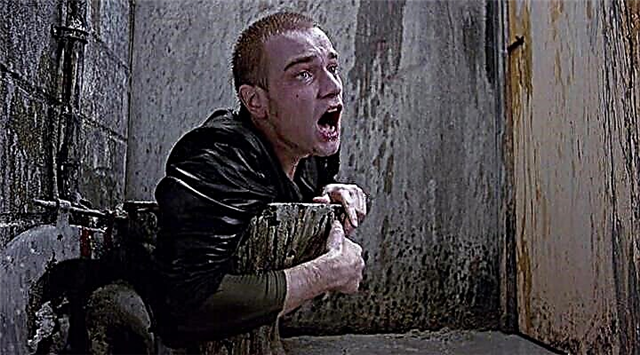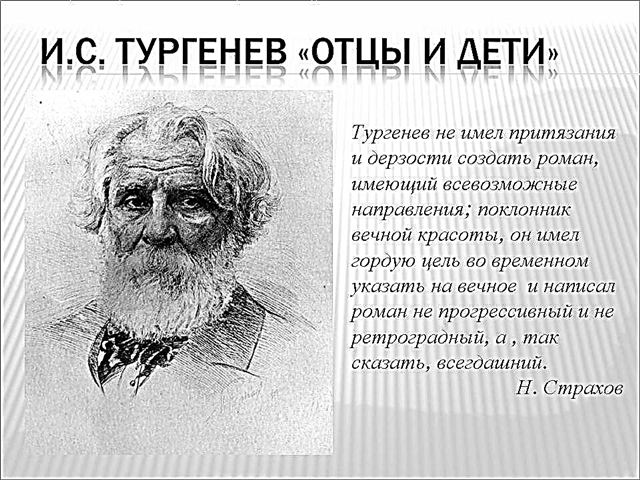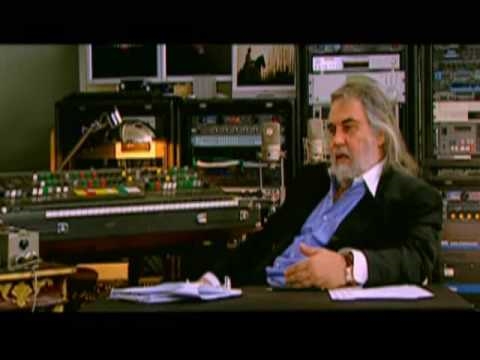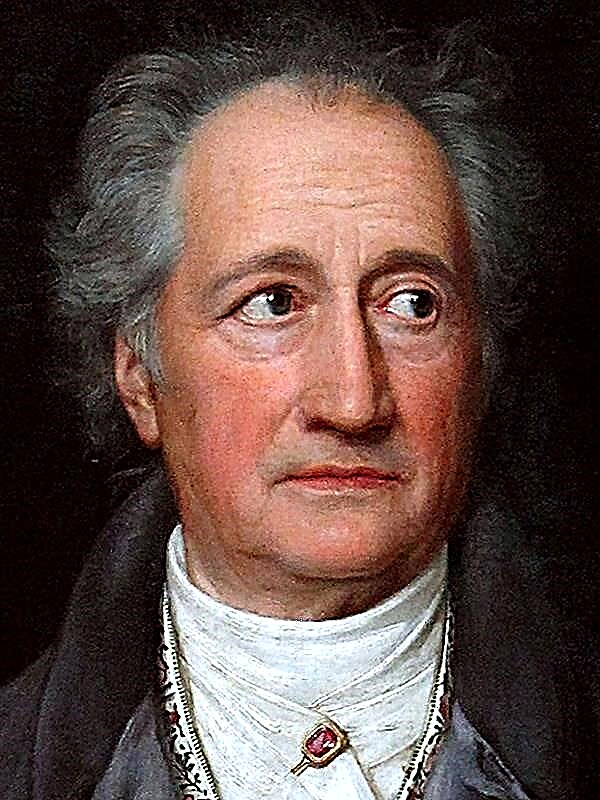Do not confuse strategy with ambitious goals, vision or slogans
What is a strategy? Let's say the “2005 Key Strategy” of an enterprise is revenue growth of 20%. Does this sound like a good strategy? No. It is just a goal.
A vision or goal are separate ideas. But a strategy is a combination of different ideas, including a plan to achieve your goals. Goals or vision can be the starting point for a strategy. The strategy should describe how these goals will be achieved.
Example. The football coach recommends that the team win the next game. This advice is useless if it does not tell you how to do it. The trainer must present a specific plan of action - a strategy.
Motivational slogans and jargon are also sometimes taken as strategies. This becomes apparent due to the lack of clear, simple words. Such nonsense takes the form of a “high” idea.
Example. The fundamental strategy of one large bank includes “customer-oriented intermediation”.
“Mediation” means that they accept contributions from some and lend them to others, while “customer-oriented” means that they give priority to the interests of the client. Translating “beautiful words”, we understand that the main strategy of a bank is simply to be a bank.
Both examples lack an action plan. And if you do not have a plan, you have no strategy.
Any good strategy is based on a diagnosis, management policy, and a set of sequential actions.
Each strategy is unique as it meets a specific need. Every successful strategy has a core. The core consists of diagnosis and management policy.
A diagnosis is a simple analysis of complex circumstances, and a policy guide outlines a way to “treat”.
Example. In 1993, IBM was in decline - a strategy offering complete computers was no longer effective. The industry was fragmented - companies began to sell computers in separate parts. Many believed that IBM should adapt to change, but CEO Lou Gerstner decided to consolidate and centralize all departments of the company to become market leaders in the field of IT consulting. IBM has developed leadership policies that focus the company's resources on resolving customer concerns.
The strategy describes a set of sequential actions that ensure the effectiveness of governance policies. The actions necessary to achieve the goals should not contradict each other.
Example. A number of unsuccessful actions showed the strategy of the Ford Motor Company. By purchasing Volvo, Jaguar, Land Rover and Aston Martin, the company has defined a new policy - to exploit these brands and at the same time take advantage of economies of scale. This led to the integration of design and production processes.
This approach lacked consistency because the value of brands was their uniqueness. Volvo buyers abandoned the safer Jaguar, and Jaguar fans did not accept the sporty version of Volvo.
A good strategy requires a choice
When choosing a strategy, the choice of one is inevitable. A good strategy requires prioritizing and focusing resources on the most important. Trying to get everything at once, you lose.
Example. In 1988, computer maker Digital Equipment Corporation (DEC) tried to compete with a new kind of PC. The directors could not decide how to respond to the new market situation, torn between the creation of turnkey systems, solving customer problems and new microprocessor technology.The company had to find a compromise, but did not choose one direction.
In 1992, the new DEC CEO decided to focus production on microchips, but it was too late. The train left: DEC fell far behind and were later bought out by a competing company.
Difficult choices often negatively affect other areas of the business and are met with resistance from employees. A strong character is needed to eliminate doubts and make a decision.
Example. Intel came up with the need for choice after the appearance of Japanese competing companies on the market. Intel CEO Andy Grove had to refocus the company on microprocessor manufacturing. This was met with resistance from many, including salespeople and researchers, followers of old habits and processes. It is easy to yield to the opposition, but Grove insisted. And not in vain: by 1992, Intel had become the world's largest semiconductor manufacturer.
The strategy should provide an advantage over competitors
Make sure the strategy provides a competitive advantage. You must grasp opportunities before competitors.
To predict is not to foresee the future, but to have an idea of the present in order to identify emerging opportunities and not to miss them.
Example. Even making big gains from SUV sales, Toyota has invested more than $ 1 billion in hybrid gasoline-powered mechanical engineering. The company's analytic evidence has shown that depletion of fossil fuels will drive demand for hybrid cars. It was necessary to become innovators so that other manufacturers would buy back the right to use their system, and not develop their own. They sought to gain an advantage.
To anticipate an opportunity (to gain an advantage), you need to determine the central turning point of the market, that is, the best way to succeed on it.
Example. Chain of mini-supermarkets 7-Eleven. Finding that visitors in Japan were bored with the same assortment of soft drinks, the company identified a central turning point: variety. And then she developed a strategy based on this point.
One mini-supermarket 7-Eleven contains only 50 varieties of soft drinks (out of more than 200 brands available in Japan), the company has created the maximum variety by exploring the tastes of local residents. Now, in each store of a certain area, an assortment of brands that are preferred by local residents is presented. Thus, 7-Eleven offer a huge variety of drinks.
By identifying and targeting a turning point, 7-Eleven gained an advantage over competitors who could not satisfy the diverse needs of the Japanese market.
Use resources and plan actions based on a specific situation
A good strategy consists of actions based on the current state of affairs and maximizing your advantage.
Example. An impeccable strategy is the military maneuvers of the Carthaginian commander Hannibal. In 216 BC e. Hannibal invaded the Roman Empire, but at the Battle of Cannes the enemy army exceeded his own by 30,000.
What did he do? He developed a strategy based on limited resources and the current situation. Hannibal built a soldier in the shape of an arc, the middle of which simulated a retreat back as the Romans approached. The Roman soldiers fled after the retreating and fell into a trap: the ends of the arc closed behind the Romans, they were surrounded and could not swing their swords because of the crowding. More than 50,000 Roman soldiers and only 5,000 from the Hannibal army died that day.
Hannibal carefully calculated every action, achieving the perfect sequence. The strategy brought him victory, despite the initial lack of any chance.
The best strategies find a compromise between resources, possible actions and optimization.Strive for your strategy to use limited resources in the most efficient way.
Use the changes to your advantage to achieve a high position in the market
The world of business is constantly changing. Develop strategies that take advantage of these changes. Often the consequences of changes are so obvious that they cannot provide you with any clear benefits. But if you notice less obvious indirect consequences, you will see other possibilities.
With the advent of television, it was obvious that it would be a huge competitor to movie theaters. But there were many indirect consequences that were much more difficult to predict.
Example. With the advent of television, Hollywood film studios had to reimburse lost revenue by financing an independent cinema that could attract a narrow circle of fans of the genre. Independent directors and screenwriters have enjoyed such funding with pleasure, enjoying the indirect effects of television.
In some markets, changes are relatively rare due to the prohibitively high costs of technological improvements. In such cases, change can be brought about through innovation.
Example. In the 1960s, black-and-white photographic films were improved to such an extent that investment in new research was no longer paying off. Therefore, it was difficult for newcomers to compete with industry giants such as Ilford and Ansco. However, the small companies Kodak and Fuji challenged the leaders by creating color film, the possibilities of which were unlimited. These companies initiated a market change and managed to rise to its top.
A good strategy maximizes your advantage.
The strategy translates the vision into reality by maximizing competitive advantage - the ability to produce more value at lower cost than competitors. How to develop such a strategy?
The first way is to use isolation mechanisms, limiting competitors.
Example. iPhone is protected by several mechanisms: brand name, company reputation and additional iTunes service with a huge multimedia database. These factors make it difficult to create competing products: not only product quality will have to be surpassed, but also marketing, an integrated operating system and a company's reputation.
Apple has so monopolized the market that the only opportunity for a competitor is limited to selling a comparable product at a lower price.
Another way to achieve a competitive advantage is to create increased demand for the resources at your disposal.
Example. Wonderful company, manufacturer of pomegranate juice POM. By investing in research, they discovered previously unknown benefits of pomegranate juice. Having bought 6,000 acres of land, they have increased the production capacity of the United States pomegranate six times.
Wonderful POM started selling pomegranate juice, highlighting its many health benefits. Having become the largest producer of such juice, they were able to reap all the fruits of success. Due to the high demand that they themselves created, they did not have to share the market with competitors.
Form strategic hypotheses, test them and improve
How to become a successful strategist? Develop strategic hypotheses - sound estimates of the current situation or its possible development.
Example. Howard Schulz in 1983, after visiting Italy, developed the hypothesis: “Italian espresso bars can be recreated in America. The public will love them. ” Schultz was delighted with Italian bars, where expensive coffee was served in a relaxed and friendly atmosphere. He was struck by the distinction of the coffee culture of America, whose market consisted of cheap and fresh coffee. Having developed a hypothesis, he decided to test it. Schultz persuaded the owners of a coffee roasting company (called Starbucks) to provide him with space to build a small espresso bar.
Test your hypotheses to get new information and form new hypotheses based on the results.
Schultz began by copying the Italian original, but noticed that the Americans preferred to sit in chairs rather than stand at the bar, so he arranged seating with comfortable chairs and tables. Then he discovered that many Americans wanted to take coffee with them, so he bought paper cups.
He tested his hypotheses, that is, he recreated Italian espresso bars, but adapted them to the needs of Americans. His company bought Starbucks and its trademark in 1987; and by 2001 brought the owner $ 2.6 billion in profit.
Creating a strategy is similar to scientific discoveries: we must come up with a possible justification (working hypothesis) and constantly improve it.
Assess your situation from the side and learn from the mistakes of others
According to statistics, people get into an accident five times more often if they talk while driving on a cell phone - just like drunk drivers. Many are aware of such a danger, but in practice they think that this will not affect them. There is a tendency to ignore the experience of other people in a similar situation and to believe that one's own situation is different from others.
Many of us trust only our own experience, so the results of our actions are often irreparable.
Example. The financial crisis of 2008. In the pre-crisis years, many believed that the economic history of other nations was no longer relevant to modern America. It was believed that the Federal Reserve had finally eliminated economic booms and busts. So people ignored the problems in the system that led to the largest financial crisis in the second half of the 21st century.
To avoid a harmful way of thinking, carefully study the situation from the side. A good strategy recognizes that in the vast majority of cases, our situation is less unique than we think.
The financial crisis of 2008 could have been averted if analysts looked at the financial history from the side and realized that crises always happen. How many accidents could be avoided if people took statistics seriously?
Good strategies benefit from paying close attention to other people's experiences.
The most important thing
Everyone can become a successful strategist. The main thing is to understand what a strategy is and look for the hidden possibilities of a specific situation, whether it be a competitive advantage, maximizing resources or forecasting changes.
- Prioritize: trying to achieve all goals at once is not an effective strategy. Make a list of the most important things. So you make sure that the goals have a single direction, and you can eliminate conflicting points.
- Learn from other people's experiences: When you find yourself in a situation that other people have been in, pay attention to how they dealt with it. Take a look at your situation from the side. Do not think that your case is different from what happened to others.
- Think like a scientist: if you are not sure, put forward a hypothesis and test it. Such a test will provide you with information on what needs to be adjusted and will bring you closer to a clear understanding of the situation. Use this to build an effective strategy.












